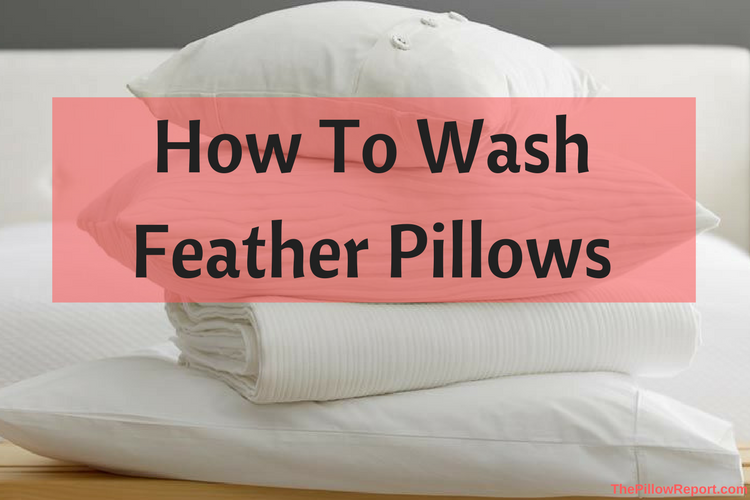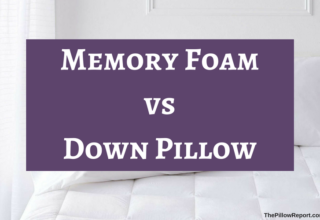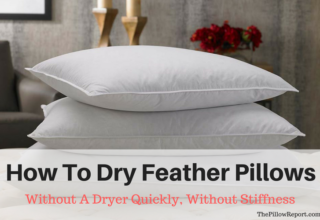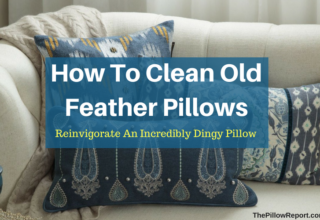Bed down with a feather pillow once, and you’ll grope in the dark for the gentle cradle if it degrades due to improper care. Although most manufacturers frown upon washing fluffy bedding items like feathers or down, the seminal Martha Stewart’s Homekeeping Handbook does not admonish gentle-cycle machine wash or hand-washing.

Our detailed how to clean feather pillows Martha Stewart guidelines resuscitate your beddings for a shipshape, neat-as-a-new-pin look.
Things To Consider | How To Wash Feather Pillows Martha Stewart
1. Stewartian Pillow-Washing
It’s best to utilize a front-loading unit as pillows remain buoyant and dry with spots in top-loading washers. Pull out the case and shell to examine the surface for holes that could spew feathers.
Martha proffers dipping a pair of pillows in one fell swoop to strike a balance in the load.
Dissolve a small amount of all-natural liquid detergent in the warm water before immersing your pillows.
Tweak the washer on the delicate or gentle cycle and let the rinse cycle run twice to flush out the detergent thoroughly.
You can also hand-wash in your tub with mild, low-sudsing soap. You can squelch water but never wring to avoid shattering delicate feathers and obliterate natural properties.
2. Drying Pillows As A Bone
- Feathers can endure the dryer in the air cycle if you want to dehumidify-as dry as dust. You can also tumble dry on low heat together with several pristine, dry towels for uptake of excess moisture.
- To keep feathers fluffy and evenly dispersed, throw in a few tennis balls enveloped in unsoiled cotton socks. The white socks deter dye in the tennis ball from infiltrating into your pillow.
- To inhibit overheating, stay on the lookout and take a glance every 30 minutes and remove them once dry.
- High heat results in clumping and denaturing of delicate feather structures like roasted proteins.
3. Ounces of Prevention
Feather pillows need a zip-on protective cover or a pillowcase to minimize the number of times you need to wash them.
Covers shield against dust, moisture, perspiration and natural oils while you can clean them weekly.
Tightly woven cambric creates a barrier weave that inhibits the entry of dust mites, microbial invaders and allergen impurities-causative agents of asthma, rhinitis or eczema.
You can drape your pillow to render both a functional and decorative touch as you can blend in with bed linen ensemble with a variety of colors.
A breathable, buttery-soft, moisture-repellent and noiseless pillow-case fabric helps cradle your head cozily while inhibiting the invasion of fungal spores, perspiration, stains, dust, and allergens.
4. Frequent Upkeep
Fluffing and airing out pillows every day helps retain the natural resilience of the feathers for a sumptuous look.
A daily re-fluffing also deters dust from stockpiling and will re-appropriate the filling uniformly.
Shake or smack the pillow while grabbing one edge of its body to help re-appropriate the mixture and inspect for lumpy portions. Push the ends in-and-out to reshape for an improved look and comfy cradle.
Consider bathing it in sun rays to evaporate excess moisture trapped and regain its original fluffiness.
You can also hit the pillows on the sides with your fists or whack in on the bed a couple of times for even distribution.
5. DIY Cleaning To Resuscitate Yellowed Feather Pillows
Natural oils and foreign elements secreted by your body creep into your pillow making it the notorious agent of yellowing and discoloring pillows. You can take the plunge for a spick and span spruce up that restores their white glory.
- Tool up with laundry detergent, all-natural bleaching agent and cross-check the care tag to ensure its machine-washable.
- Pull out the pillow cover and soak your pillow in hot water to dissolve stubborn stains with military precision.
- Add a cupful of laundry soap and half a cup of all-natural product directly into the unit or dispensing compartment for front-loading washers.
- Follow Martha Stewart’s guidelines on machine-and-hand-washing then drying out thoroughly.
6. Replace Your Pillows After 10 Years +
Our top-brass expert Martha Stewart touts the high-grade longevity fill. When its barren, flattened as a board, it’s as crooked as a dog’s hind leg. She says you have to replace as re-fluffing will not do the trick.
- Keep your pillow on a flattened surface. Inspect for lumps, bumps, and dents, the symptoms of a dead pillow. If you experience back, neck and spinal ache, you need a more supportive headrest.
- After feathers have continuously shattered and the fill flattens out due to moisture, perspiration and body oils, they can never regain their original volume. If you detect mildew, mold or fungal odor, replace it. Try to fold your pillow at the center and observe if it flexes out of shape.
7. Benefits of Martha Stewart’s Pillow Washing Philosophy
Thorough cleaning will safely, uniformly and entirely restore the yellowed, begrimed and stained pillow shell to its neat-as-a-new-pin and pristine white without damaging the resilience of natural fill.
Washing once in a blue moon according to Martha will flush out sweat, saliva, body secretions, and the army of microbial organisms, oils, lotions, dust mites and external impurities. It denatures biological contaminants, dead dust mites, and their fecal or decaying matter.
Washing helps foster the longevity and natural properties of feathers. DIY cleaning your feather pillows adds chunks of time to their natural life.
Making yellowed pillows shipshape by whitening salvages your bedding and saves you quite some bucks.
8. Martha Stewart Pillow Washing Tips
- Avoid laundry and tub washing soaps with surfactants as they eat away natural oils that equip down with the unique ability to fluff up.
- Use tennis balls or sneakers to speed up drying enveloped with white socks to prevent the spillover of yellow dye into the outer shell.
- Use a protective cover to minimize contamination by protein allergens, dust mites, dead skin cells, dust mite fecal materials and other impurities.
- Use only the low-heat settings to avoid ravaging delicate feathers or denaturing quills which renders them useless.
- Dry it to kiln-dry; this prevents the explosion of mold, mildew or emission of odors. Damp pillows end up in your trash bin after developing clumps or flattening partially.
Final Verdict
Our in-depth how to wash feather pillows Martha Stewart will keep your bedding in apple-pie order half-year round. The first step depends on the manufacturer’s care tag, deviating from instructions will expose linen to wear and tear, corrosion of starch composing the cambric and more doom.
It must dry as dust to inhibit mold or mildew havens. Martha Stewart, undisputed queen, and maven of housekeeping always hit the nail on the head in boosting your bedding’s longevity, cozy cuddling and aesthetic touch.
















